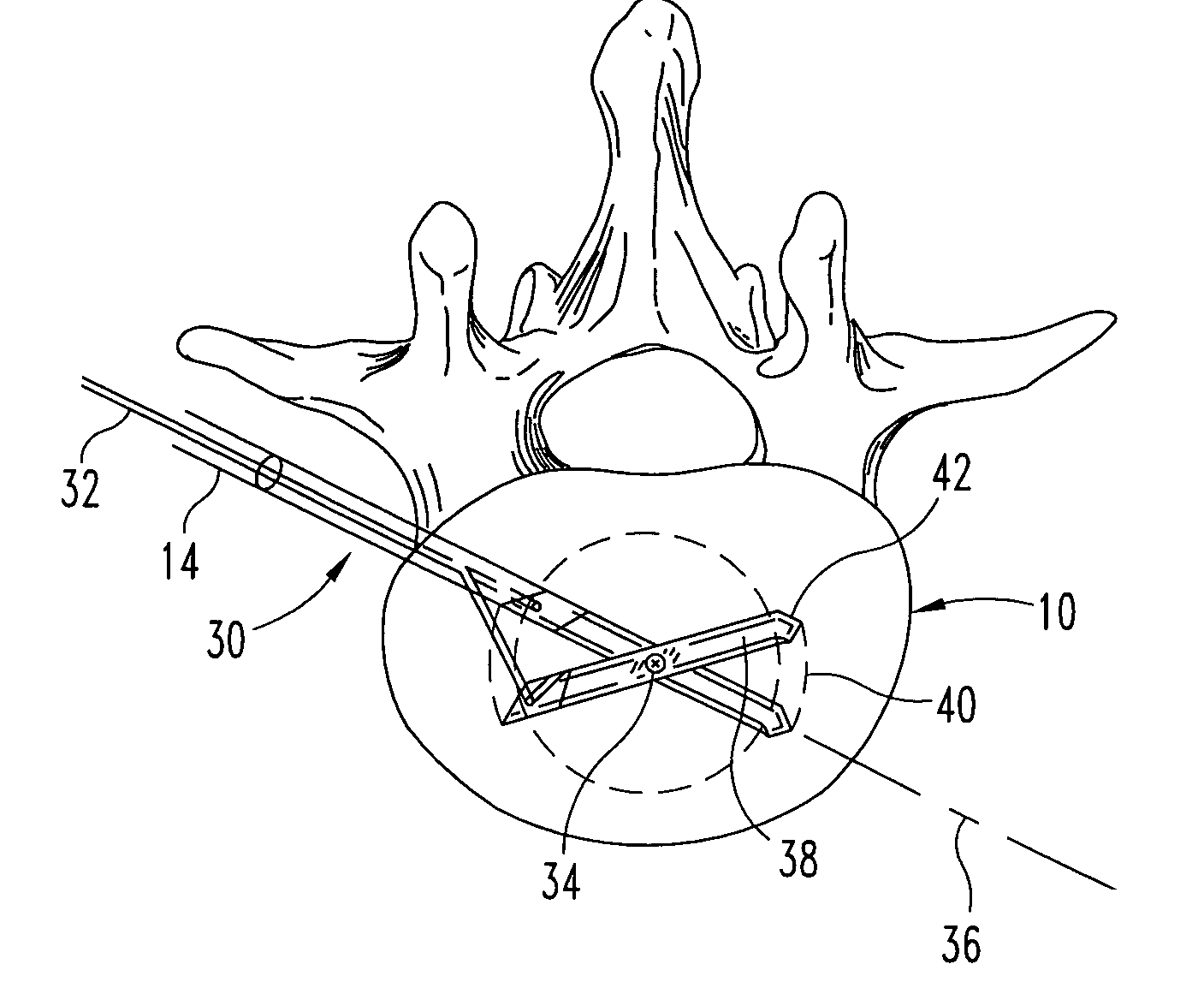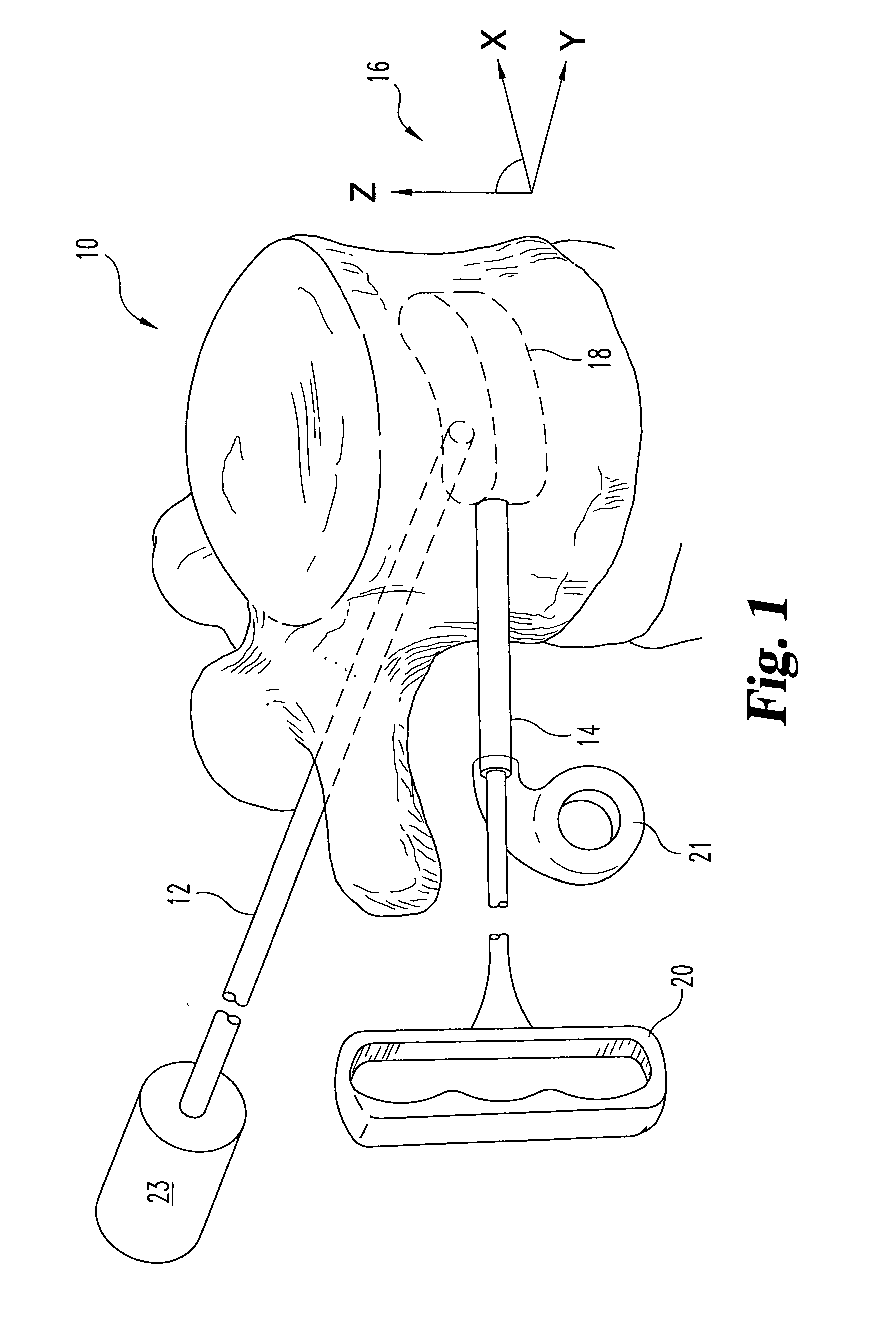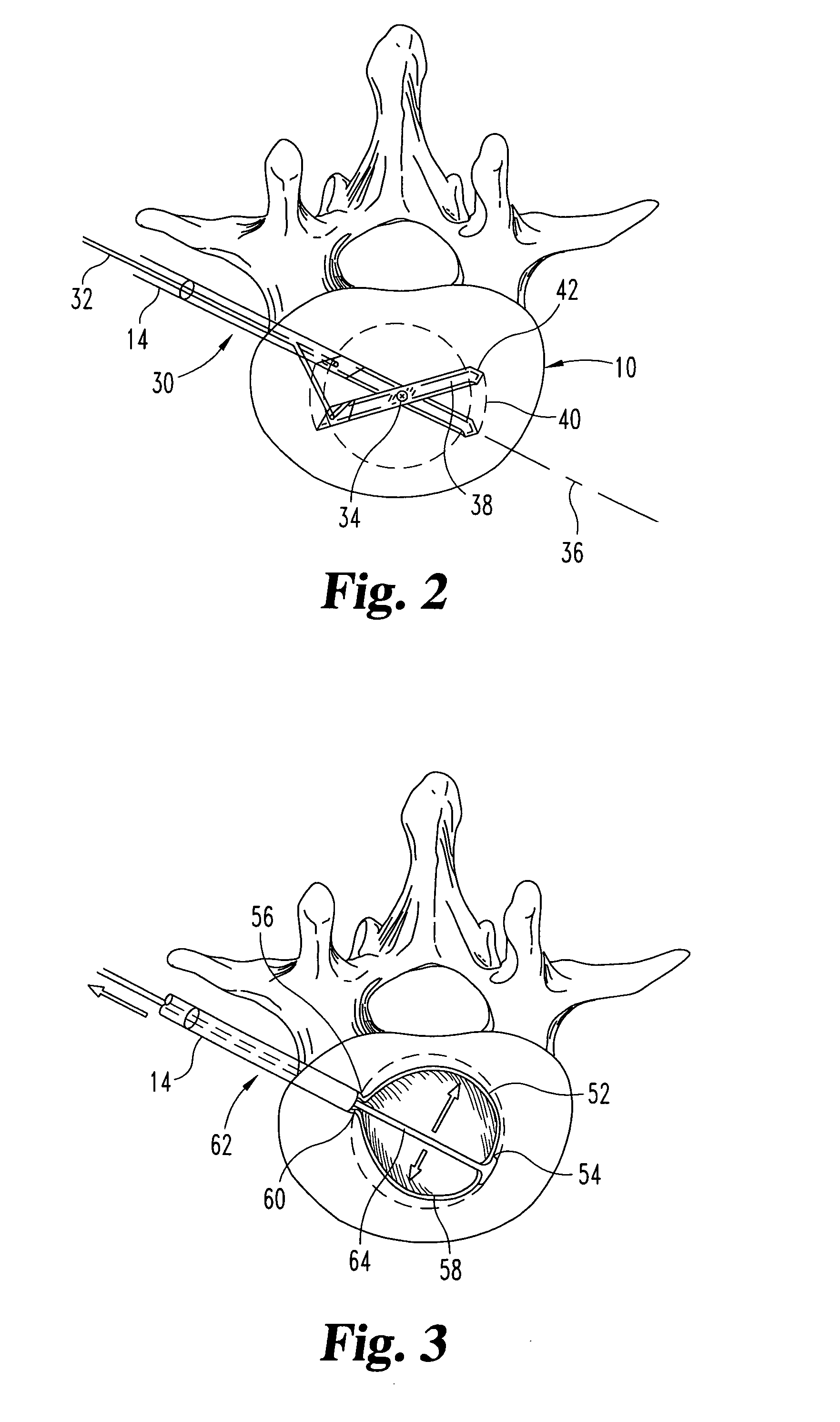Transverse cavity device and method
a transverse cavity and device technology, applied in the field of bone compression fracture treatment, can solve the problems of reducing the structural integrity of the vertebrae, affecting the patient, and reducing the height of the vertebrae, so as to increase the area of the “footprint” and reduce the total distraction for
- Summary
- Abstract
- Description
- Claims
- Application Information
AI Technical Summary
Benefits of technology
Problems solved by technology
Method used
Image
Examples
Embodiment Construction
[0034]FIG. 1 is a phantom view of a vertebral body showing a transverse cavity 18 and a coordinate system 16. This figure shows a vertebral body 10 in isolation. Two possible surgical entry points into the vertebral body contemplated within the scope of the invention are illustrated. One entry point is “transpedicular.” This approach is indicated by the physical location of tube 12, traveling through the pedicle into the vertebral body 10. Another approach is “extra-pedicular.” This access approach is illustrated by tool 14 entering the vertebral body at a location lateral of the transpedicular approach on the posterolateral corner of the vertebral body.
[0035]The typical surgery will include a small incision in the back adjacent to the vertebral body. Next, a small gauge needle or guide-wire is introduced to confirm proper positioning under fluoroscopy. Physicians typically utilize an 11-gauge needle for the transpedicular approach and a larger needle or tube (up to 6 mm ID) for the...
PUM
 Login to View More
Login to View More Abstract
Description
Claims
Application Information
 Login to View More
Login to View More - R&D
- Intellectual Property
- Life Sciences
- Materials
- Tech Scout
- Unparalleled Data Quality
- Higher Quality Content
- 60% Fewer Hallucinations
Browse by: Latest US Patents, China's latest patents, Technical Efficacy Thesaurus, Application Domain, Technology Topic, Popular Technical Reports.
© 2025 PatSnap. All rights reserved.Legal|Privacy policy|Modern Slavery Act Transparency Statement|Sitemap|About US| Contact US: help@patsnap.com



